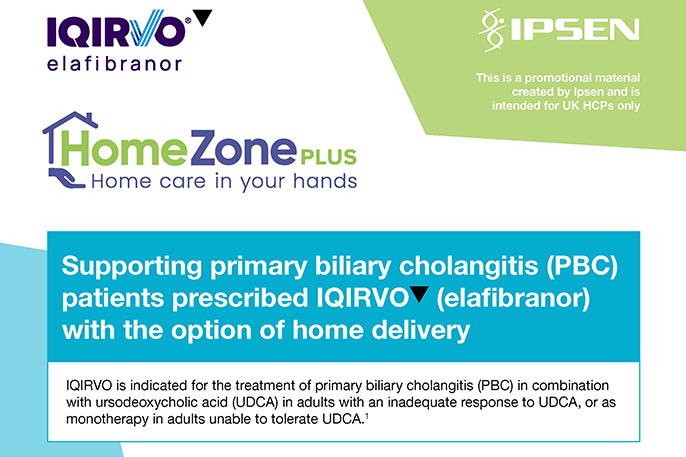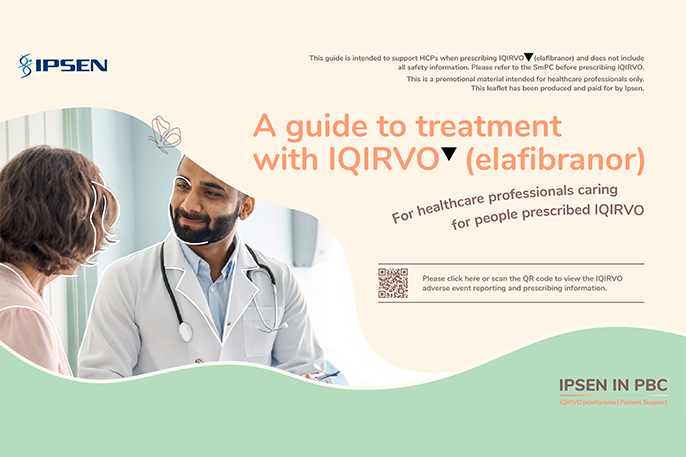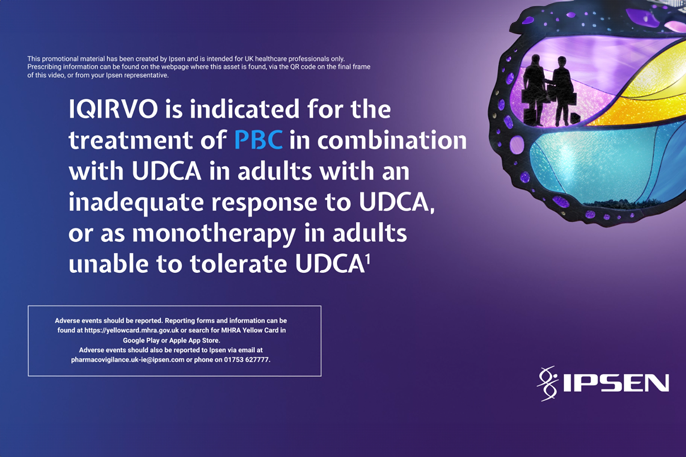UNLOCK THE IQIRVO®▼ (ELAFIBRANOR) EFFECT
A once-daily tablet for all eligible patients – with no dose adjustment required1
IQIRVO is indicated for the treatment of primary biliary cholangitis (PBC) in combination with ursodeoxycholic acid (UDCA) in adults with an inadequate response to UDCA, or as monotherapy in adults unable to tolerate UDCA.1
IQIRVO (elafibranor)
Resources
Footnotes
*Biochemical response is defined in the trial as ALP <1.67 x ULN, and ALP decrease ≥15% and TB ≤ULN at 52 weeks.5
†Patients either received IQIRVO on a background of UDCA (102/108) or received UDCA plus a placebo (51/53).5
‡IQIRVO + UDCA met the primary endpoint of biochemical response, defined as by ALP <1.67 x ULN, and ALP decrease ≥15% and TB ≤ULN. Reduction in ALP and bilirubin is predictive of long-term outcomes.1,6–9
Abbreviations
ALP, alkaline phosphate; PBC, primary biliary cholangitis; PPAR, peroxisome proliferator-activated receptor ; TB, total bilirubin; UDCA, ursodeoxycholic acid; ULN, upper limit of normal.
References
- IQIRVO® (elafibranor) Summary of product characteristics (SmPC). 2024.
- Trivedi HD et al. Frontline Gastroenterol. 2017;8(1):29–36.
- Invernizzi P et al. Dig Liver Dis. 2017;49(8):841–846.
- Hirschfield GM et al. Expert Rev Gastroenterol Hepatol. 2021;15(8):929–939.
- Kowdley KV et al. N Engl J Med. 2024;390(9):795–805
- Lammers WJ et al. Gastroenterology. 2014;147(6):1338–1349.
- Corpechot C et al. Clin Res Hepatol Gastroenterol. 2022;46(1):101770.
- de Veer RC et al. Aliment Pharmacol Ther. 2022;56(9):1408–1418.
- Murillo Perez CF et al. Am J Gastroenterol. 2020;115(7):1066–1074.











